I am not a bushcrafter in the sense of camping out and surviving with minimal equipment, but I do enjoy exploring new environments and gathering wild food.
I am just back from a week in Galicia, Spain an area with such an abundance of wildlife and wild food it is a softie bushcrafters paradise, no struggling against the elements here, more wandering on a sunny day scrumping wild figs and apples.
This is where I was based staying with friends in the cottage third from the right.
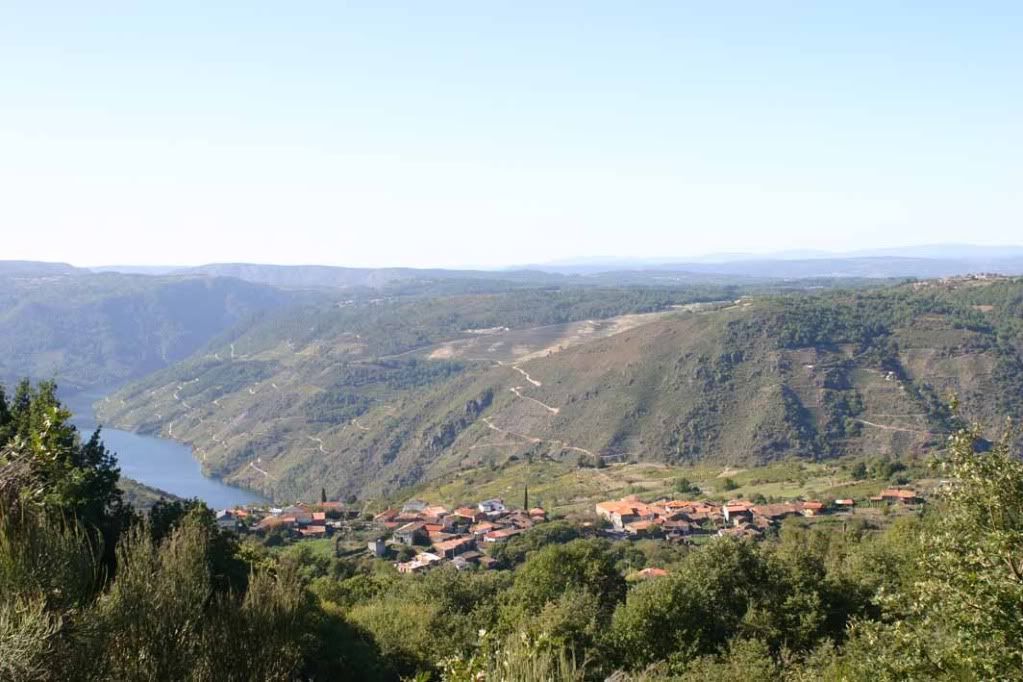
The lower slopes of the hills are vineyards, the middle area chestnut groves and the upper area was mixed arable and grazing but the whole area has been suffering from emigration with all the young folks moving abroad and only old folk left. Many of the houses are empty and the land is reverting to nature. Some of the chestnut groves are still worked, this is typical, the trees are managed as pollards, cutting the major limbs in rotation.
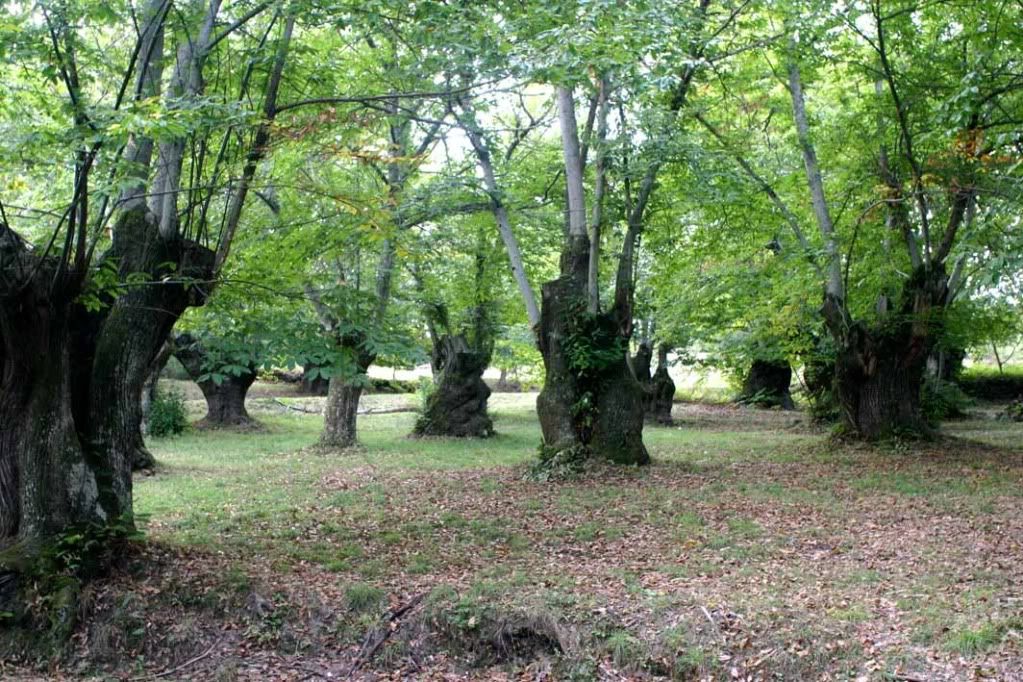
There were vast numbers of chestnuts everywhere, the wild boar must be very fat.
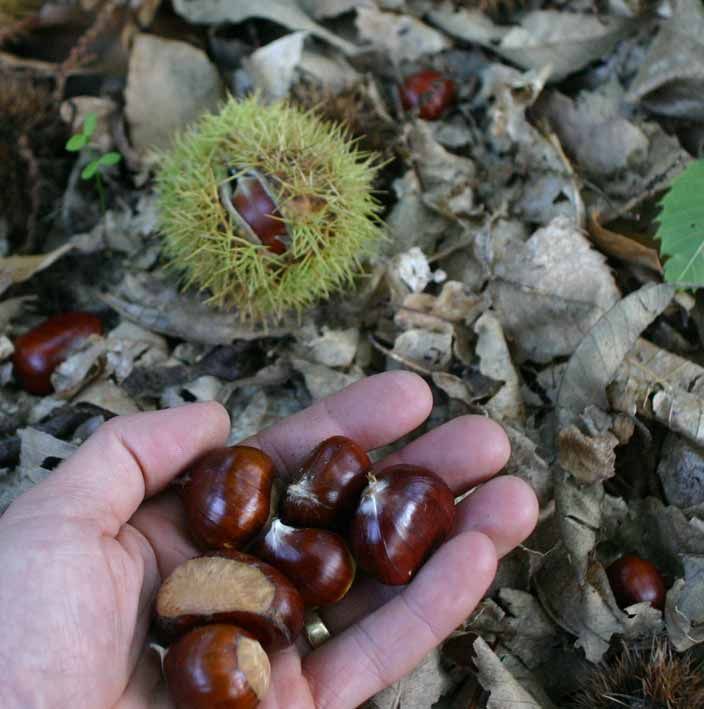
I went out for a long walk each morning scrumping and gathering.
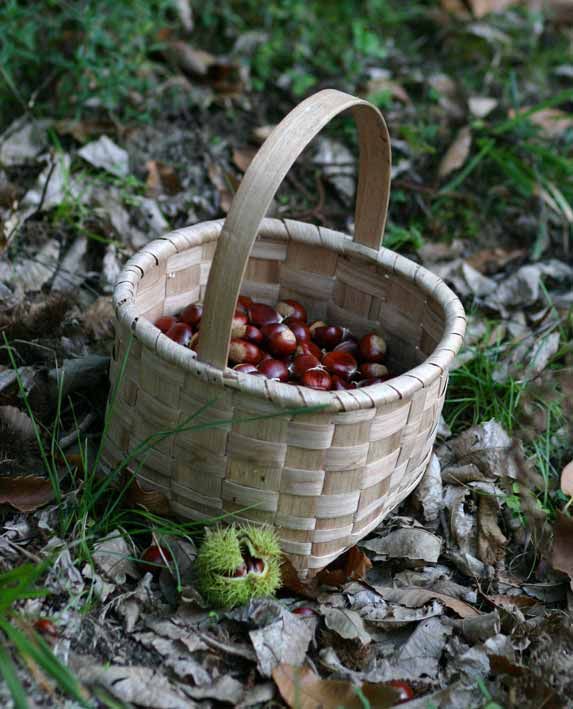
If you buy spanish chestnuts this is where they come from.
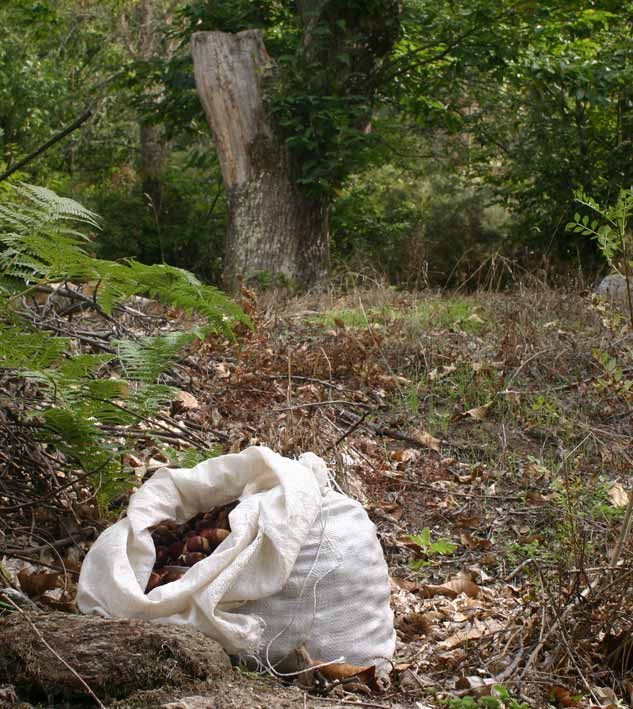
My bedroom balcony overlooking the chestnut groves.
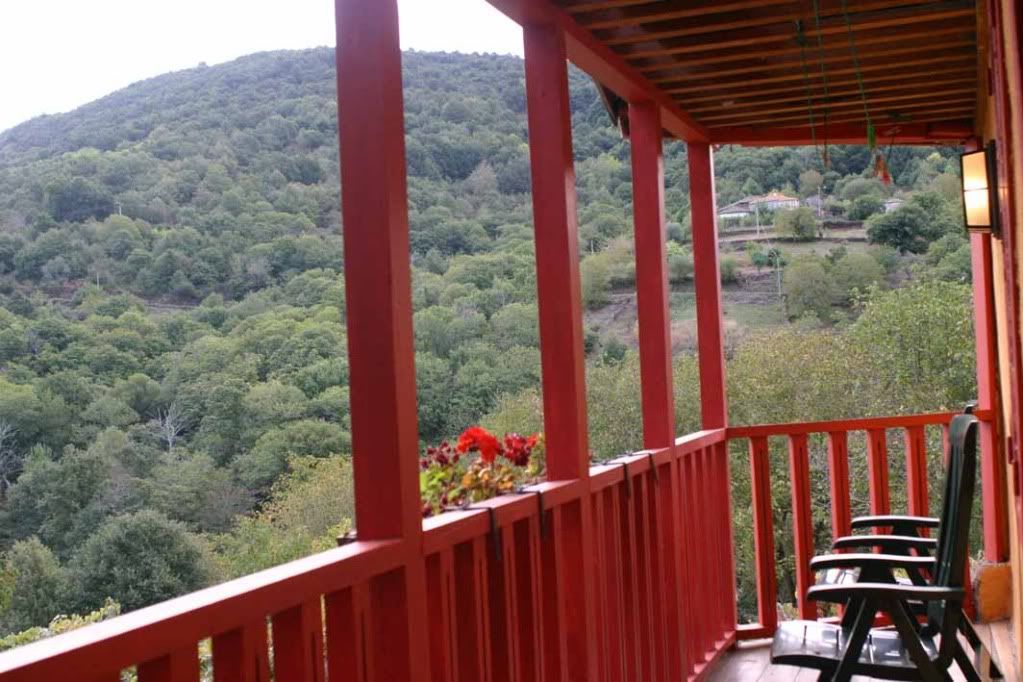
Lots of fungi
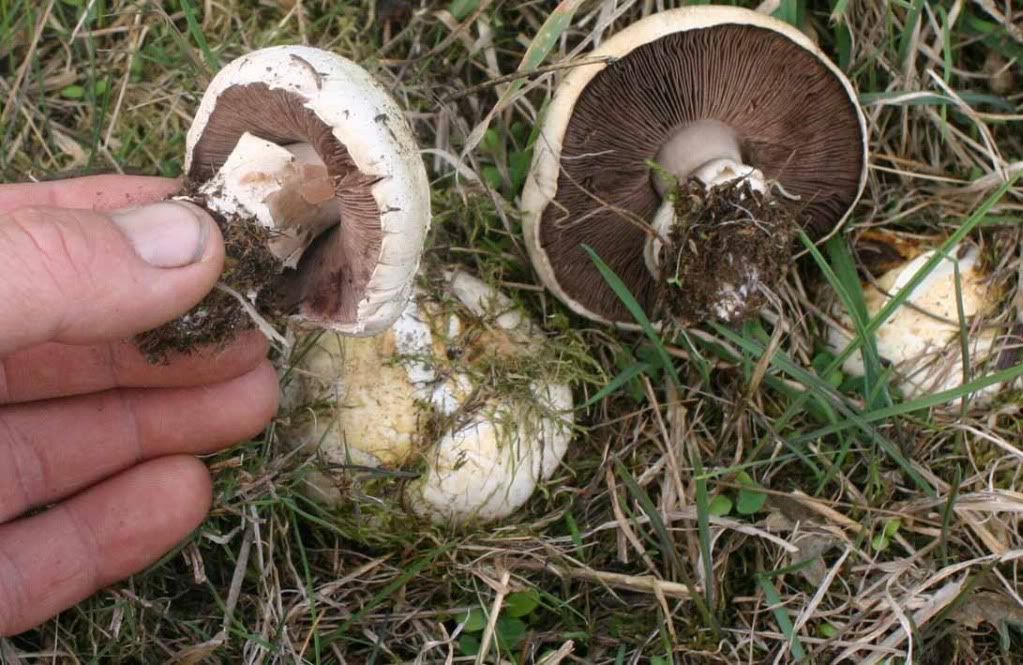

I took these parasols home and we cooked them. Interestingly parasols are one of the few wild mushrooms they eat in Galicia they don't even eat ceps in contrast to Catalonia where everyone picks and eats lots of varieties.
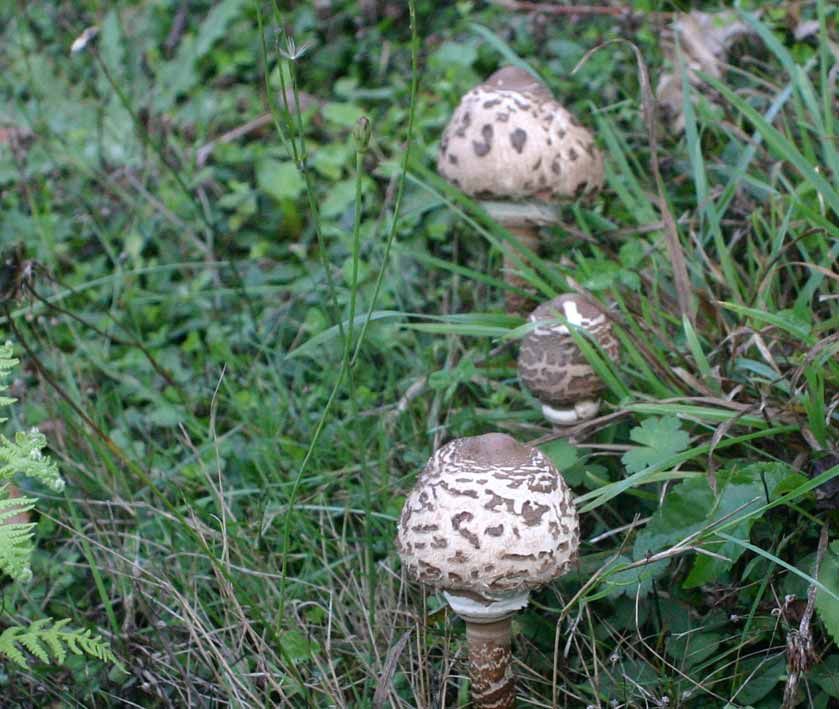
I would set off all day walking without taking any food at all there was no need. Everywhere there were abandoned villages with abandoned orchards.
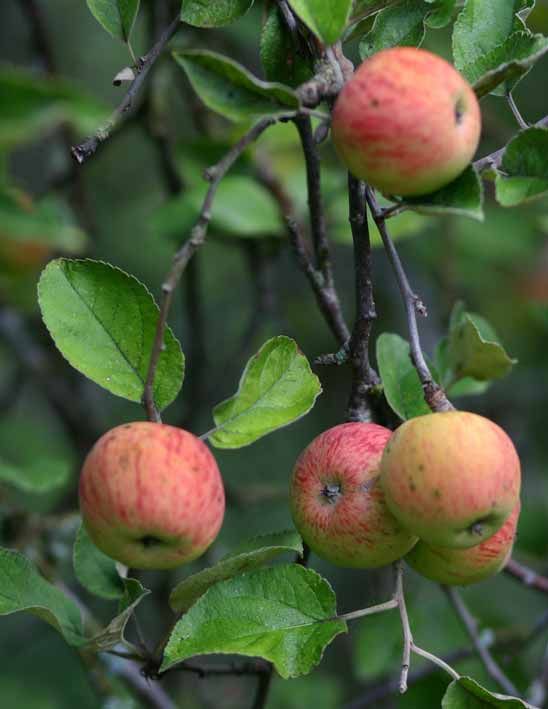
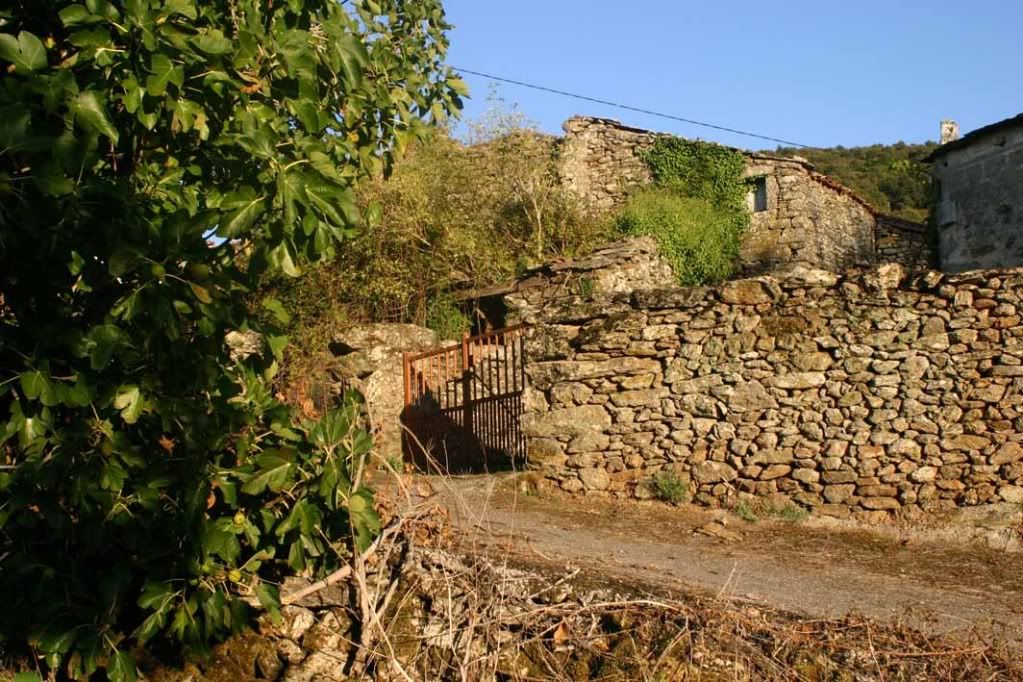
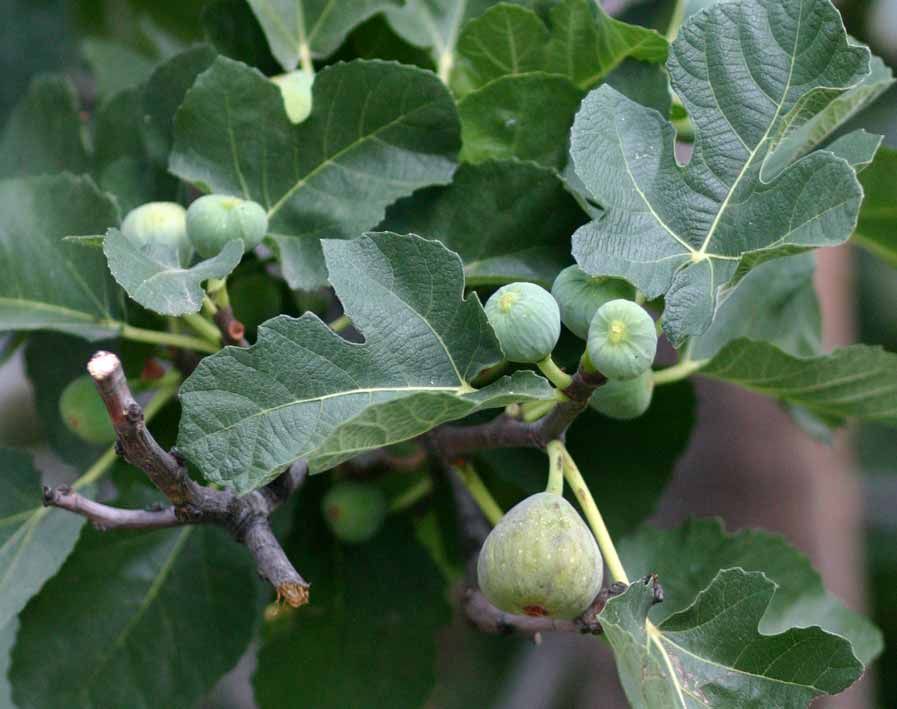
Pine nuts
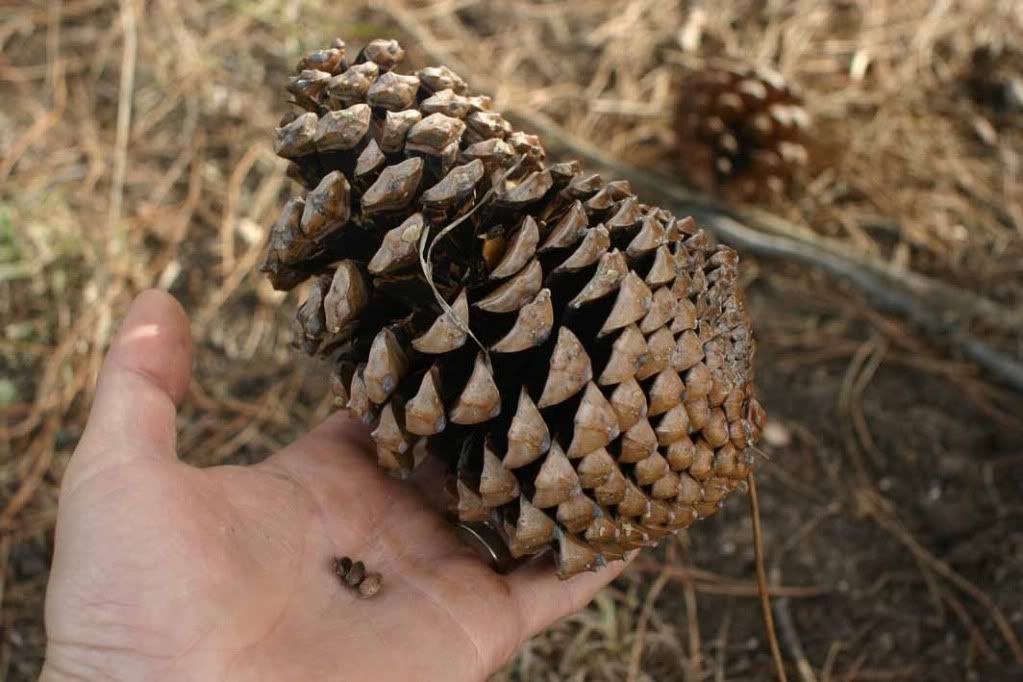
Moving up the hill you get into the scrubland.
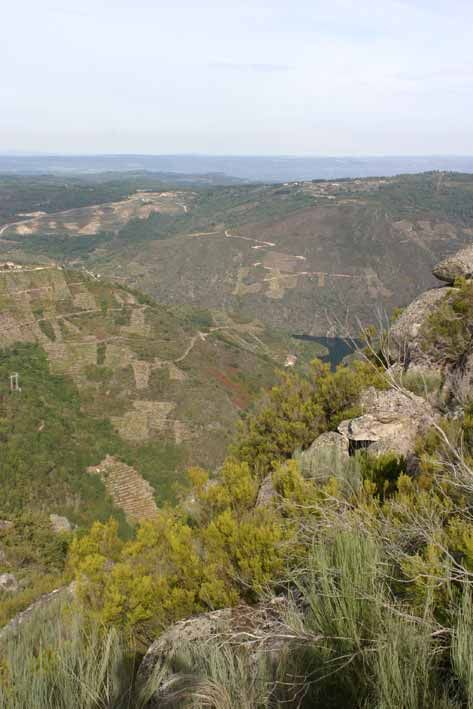
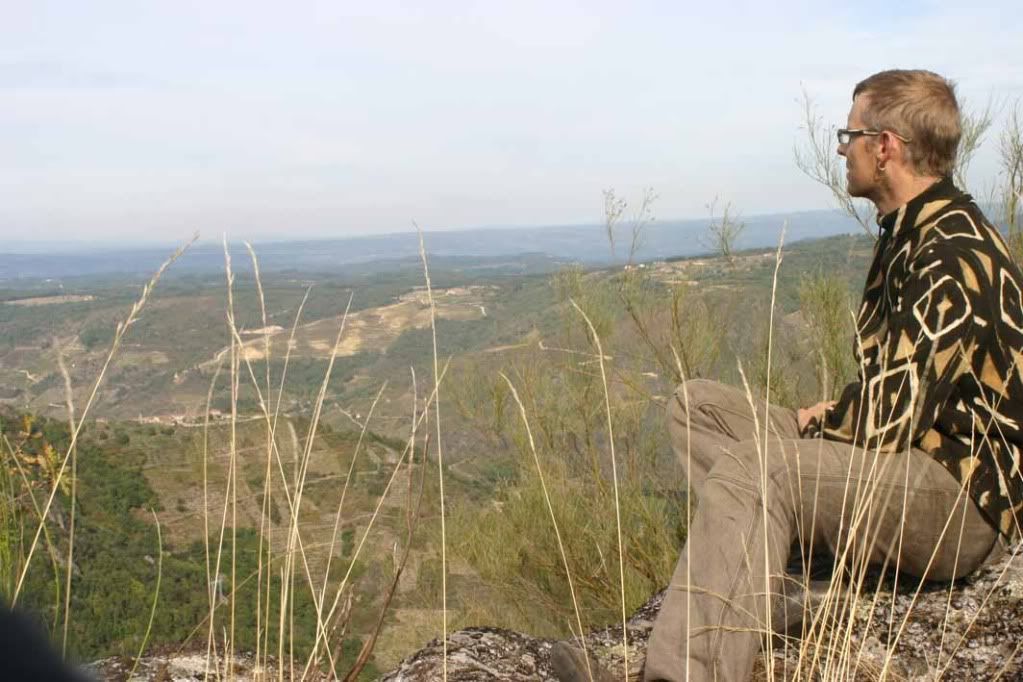
A lot of the time I was on wild boar tracks, these are far harder to follow than deer tracks as they push under a lot of low scrub.
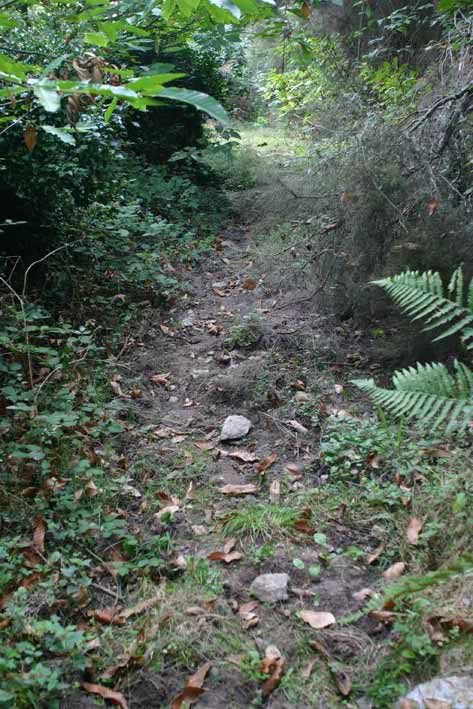
Piggy paradise, this was a warm dry day and the wallow was still freshly wet so I reckon the pigs left not long before I got there.
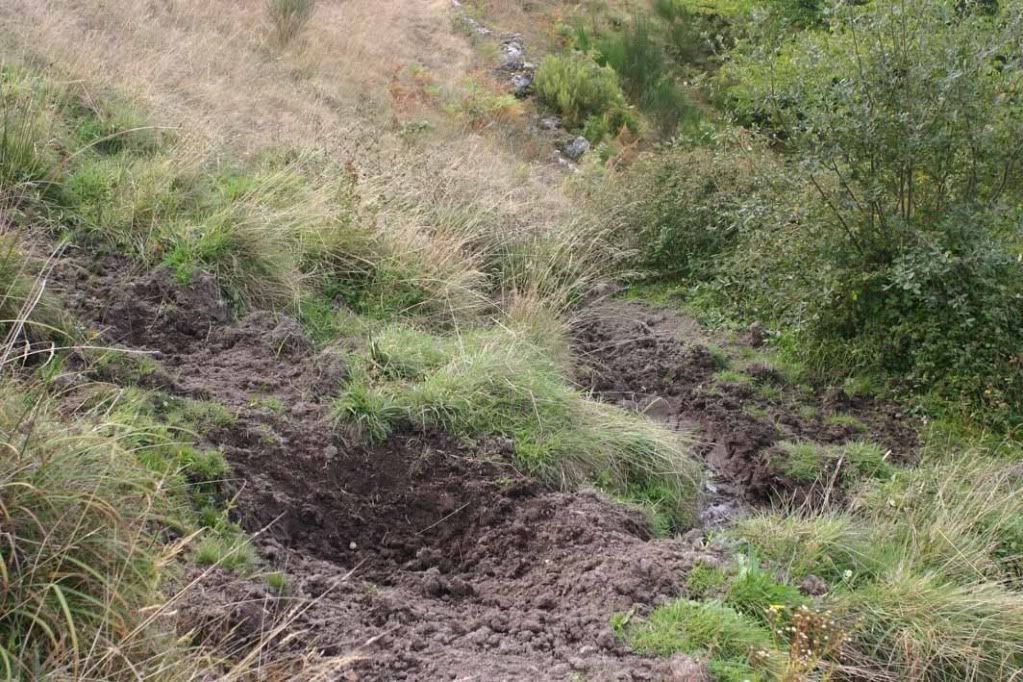
Judging by the seed heads the meadows are highly species rich and I would love to see it in May or June. This time of year autumn crocus were in flower.
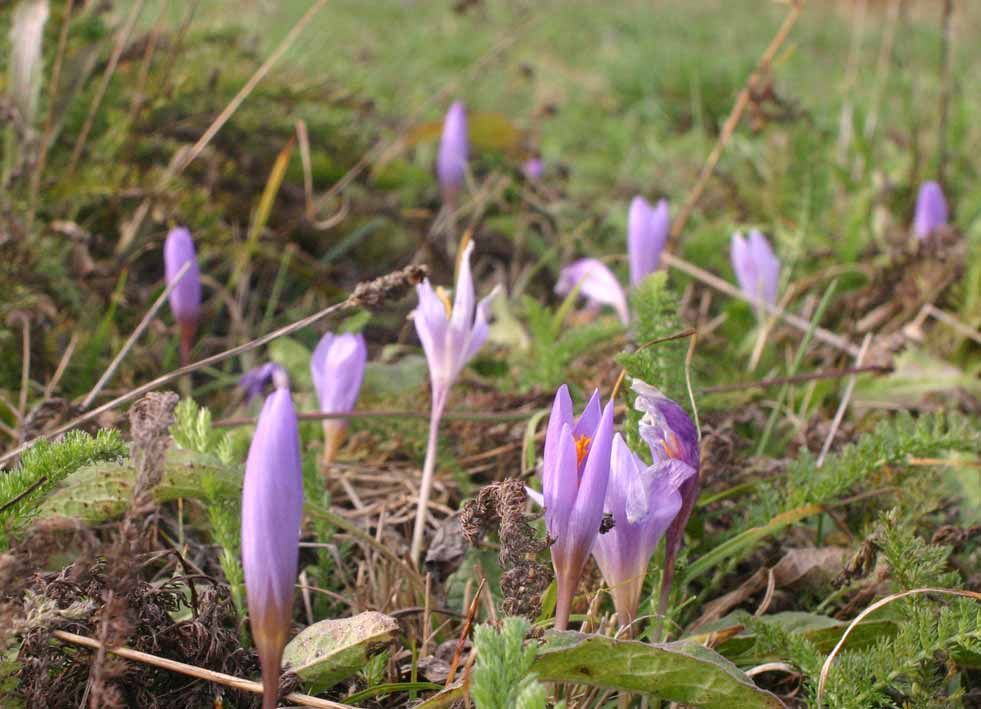
Clouded yellow, I don't know the flower, bit like ragwort but more conical shape.
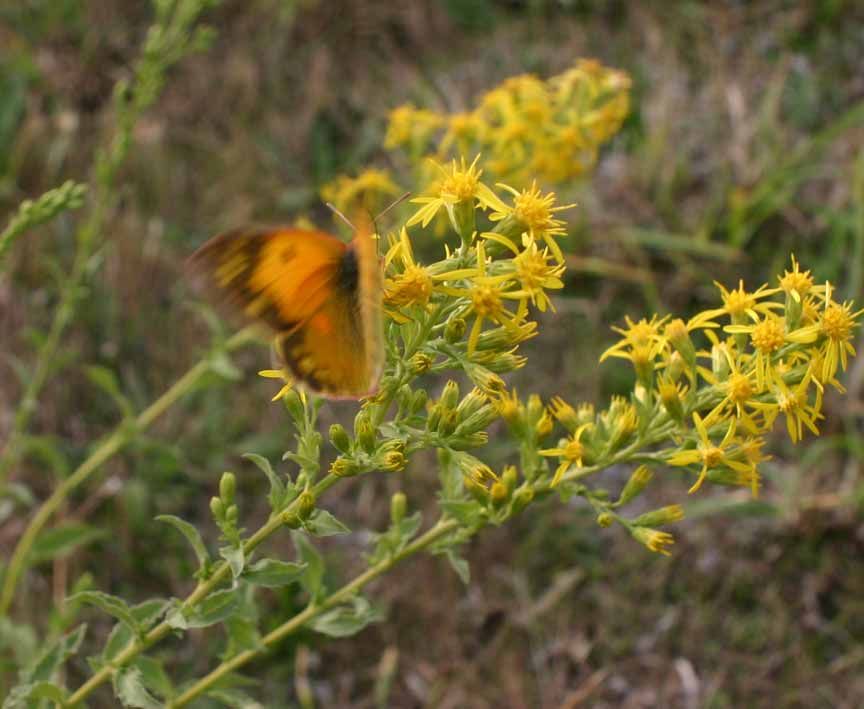
This chap had been cutting gorse, I wondered if it was fuel for bread ovens but aparantly they plough it in as green manure.
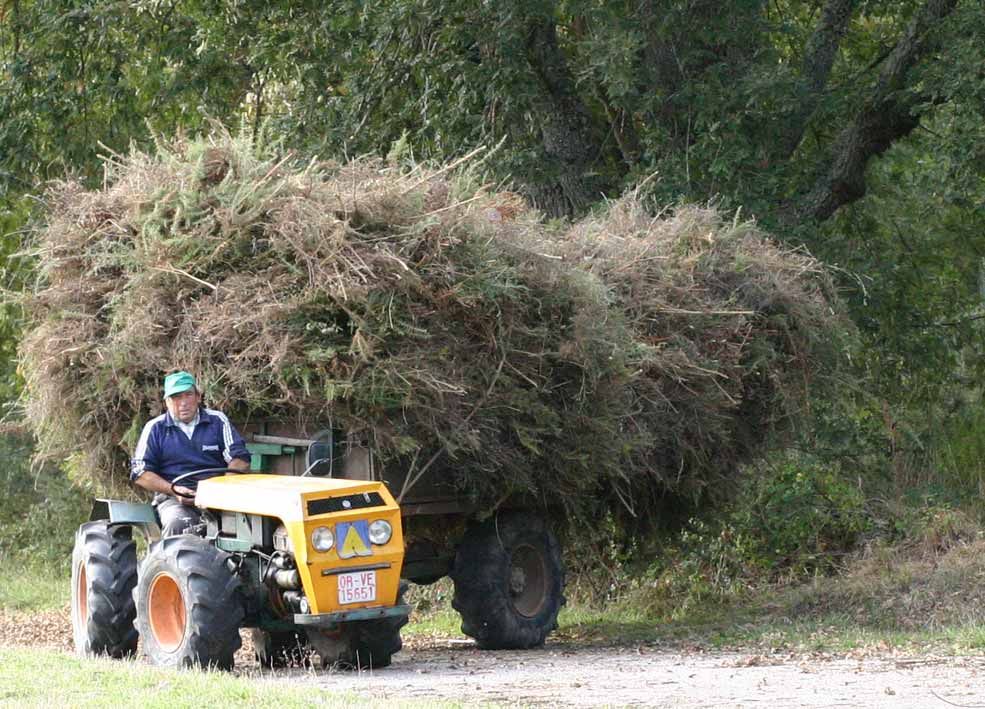
Getting on to more crafty stuff, I was staying with friends Lluis and Anna, Lluis makes baskets and Anna weaves linen and uses natural dyes. This lichen gives a good dye. The tremendous lichen growth is a sign of clean air and for Spain high humidity.
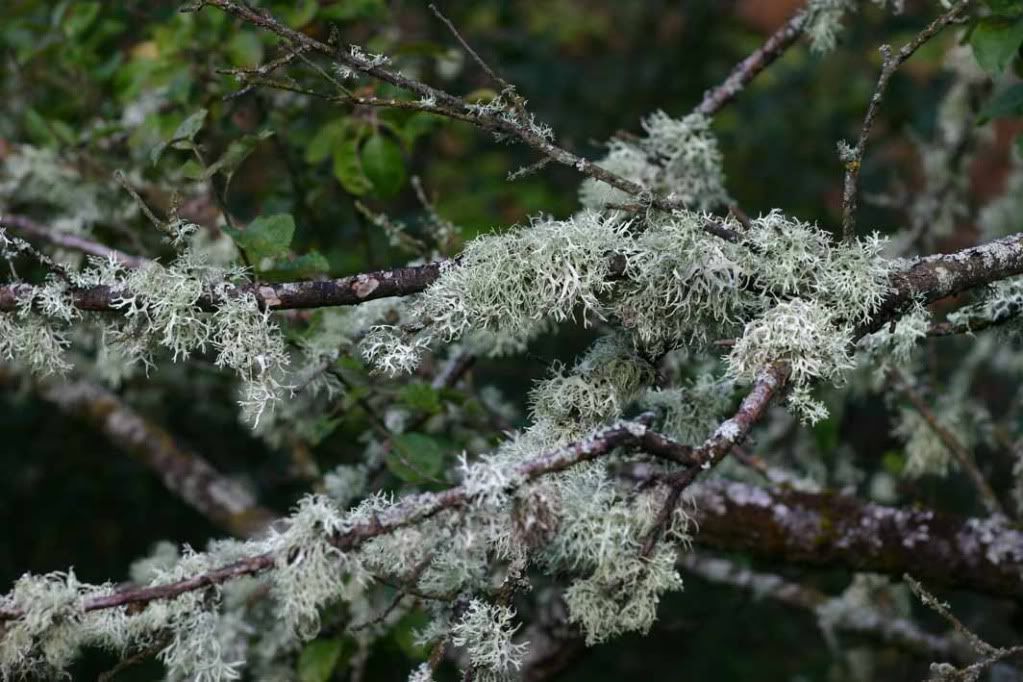
One of the most incredible things I have ever seen, a real hangover from the stone age. This is a woven childs rain coat made from soft rush. This is very similar to the cloak work by Oetzi the ice man and apparantly they were used in Galicia until the 1960s.
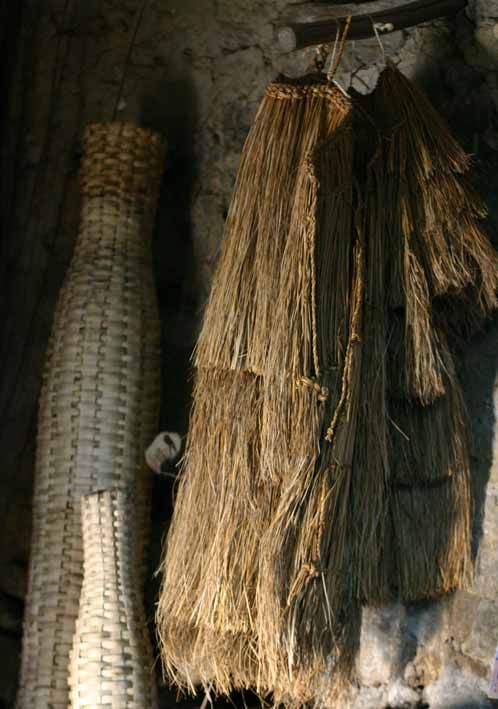
Detail
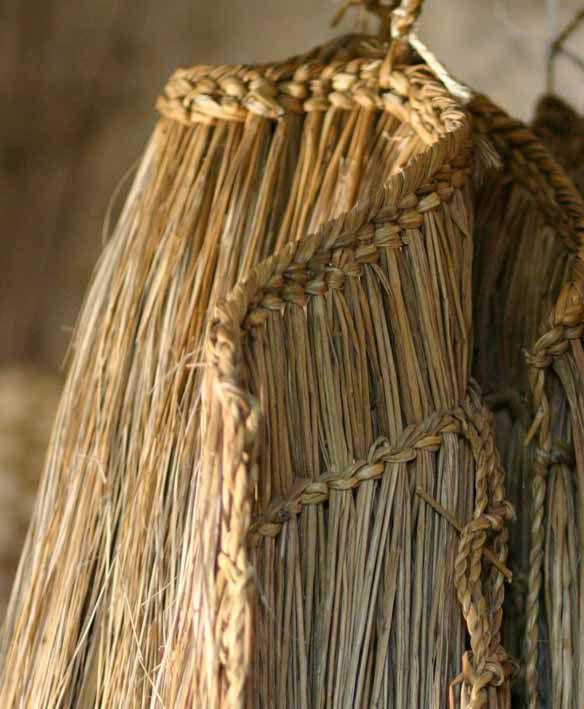
It was good to see the chestnut being worked too.
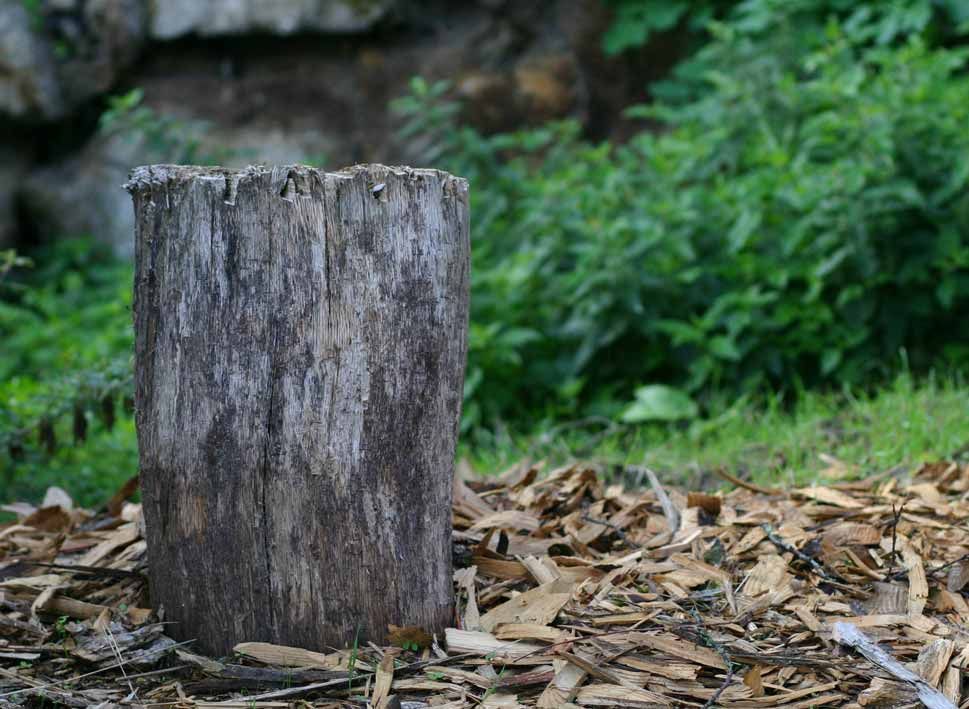
All the local roofs were made with chestnut poles and these were stakes for the vines.
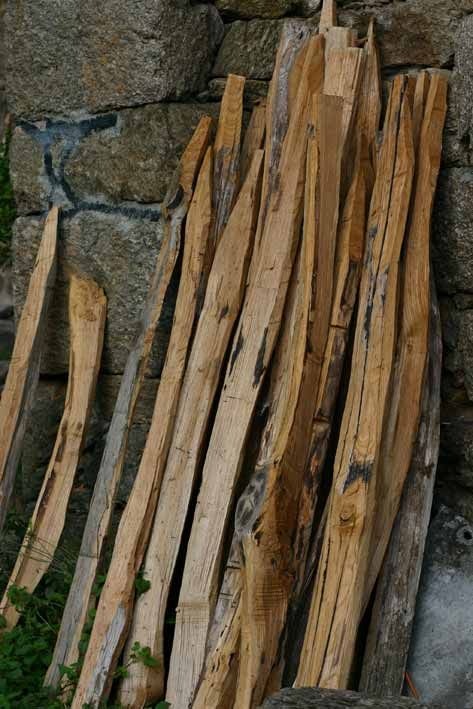
Out and about we spotted quite a few old granaries, note the ox plough another hangover from 200 years ago and in use until recently.
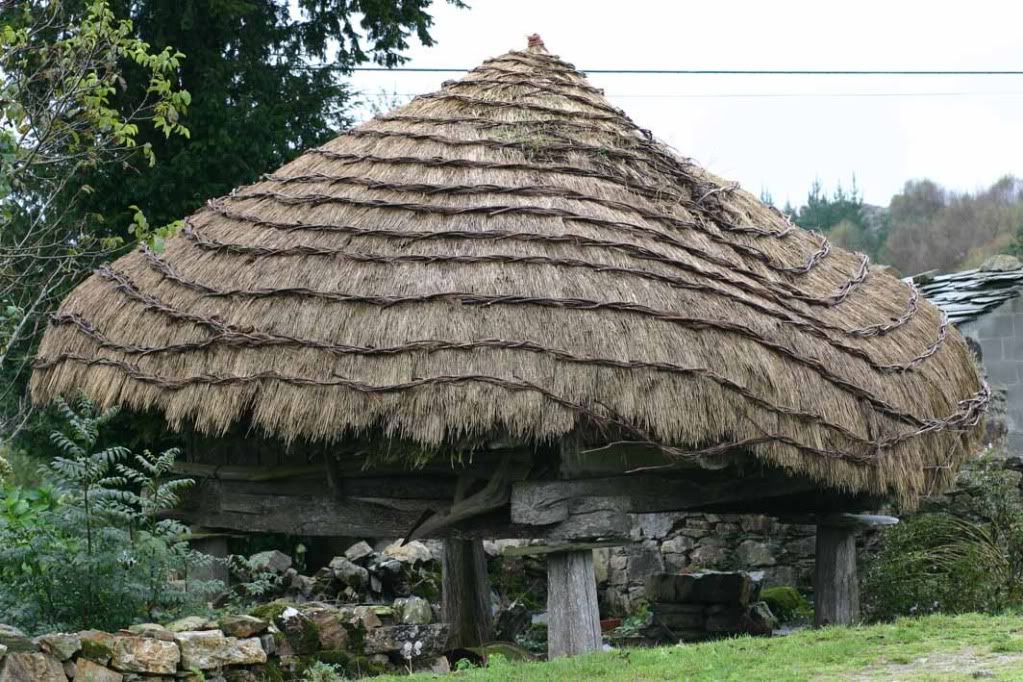
At an ethnographic museum I saw the biggest bark container I have seen (unless we count bark canoes) This was used for washing, fill it with washing, put a piece of felt over the top fill with wood ash and pour over hot water.
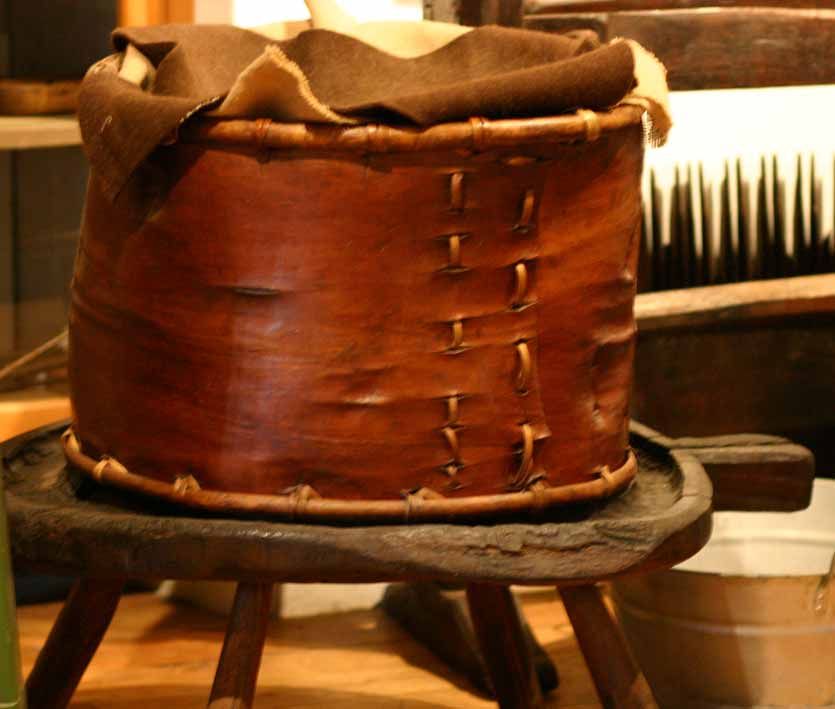
Me and Lluis scoffing sepia, a catalan dish made from cuttlefish and potatoes.
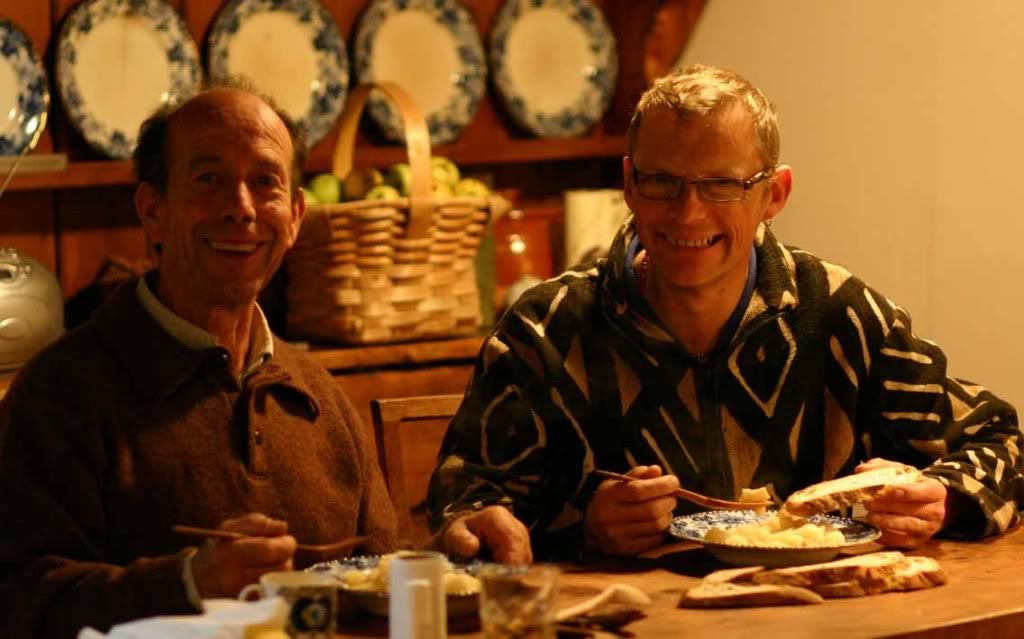
A bit of spoon inspiration for me.
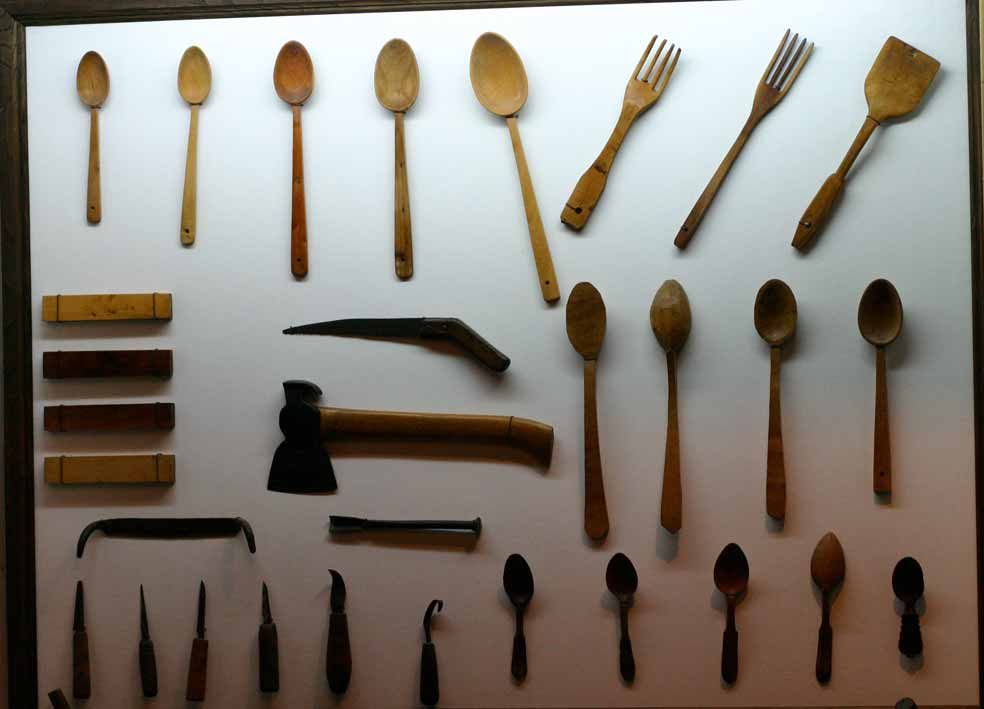
The real reason for the trip was to run a course on internet marketing for craftspeople but we fitted in so much more and I will be going back to explore more.
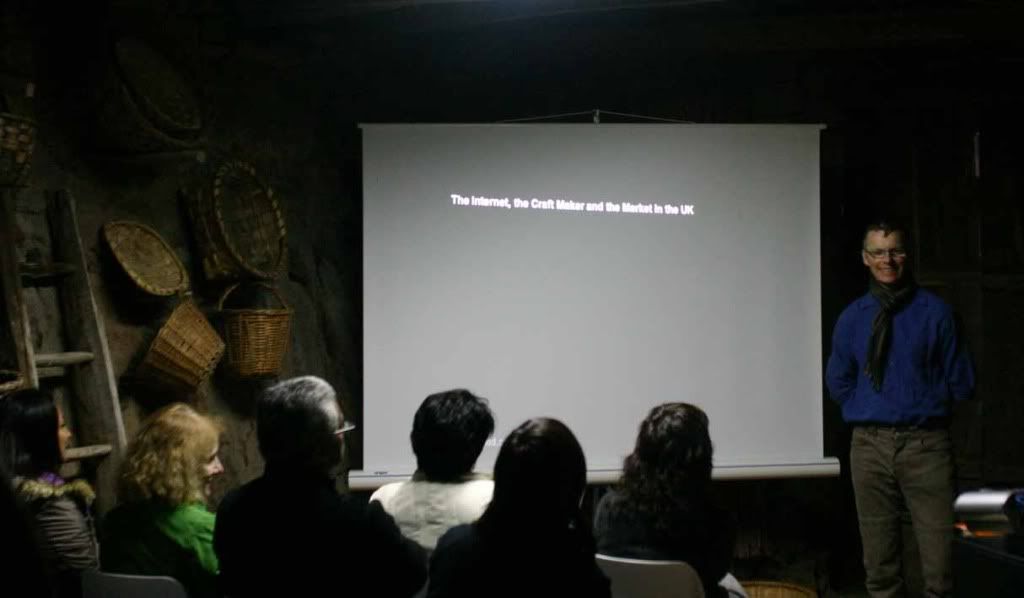
More info and pics on my blog here and a link to Lluis and Annas holiday cottage here
I am just back from a week in Galicia, Spain an area with such an abundance of wildlife and wild food it is a softie bushcrafters paradise, no struggling against the elements here, more wandering on a sunny day scrumping wild figs and apples.
This is where I was based staying with friends in the cottage third from the right.

The lower slopes of the hills are vineyards, the middle area chestnut groves and the upper area was mixed arable and grazing but the whole area has been suffering from emigration with all the young folks moving abroad and only old folk left. Many of the houses are empty and the land is reverting to nature. Some of the chestnut groves are still worked, this is typical, the trees are managed as pollards, cutting the major limbs in rotation.

There were vast numbers of chestnuts everywhere, the wild boar must be very fat.

I went out for a long walk each morning scrumping and gathering.

If you buy spanish chestnuts this is where they come from.

My bedroom balcony overlooking the chestnut groves.

Lots of fungi


I took these parasols home and we cooked them. Interestingly parasols are one of the few wild mushrooms they eat in Galicia they don't even eat ceps in contrast to Catalonia where everyone picks and eats lots of varieties.

I would set off all day walking without taking any food at all there was no need. Everywhere there were abandoned villages with abandoned orchards.



Pine nuts

Moving up the hill you get into the scrubland.


A lot of the time I was on wild boar tracks, these are far harder to follow than deer tracks as they push under a lot of low scrub.

Piggy paradise, this was a warm dry day and the wallow was still freshly wet so I reckon the pigs left not long before I got there.

Judging by the seed heads the meadows are highly species rich and I would love to see it in May or June. This time of year autumn crocus were in flower.

Clouded yellow, I don't know the flower, bit like ragwort but more conical shape.

This chap had been cutting gorse, I wondered if it was fuel for bread ovens but aparantly they plough it in as green manure.

Getting on to more crafty stuff, I was staying with friends Lluis and Anna, Lluis makes baskets and Anna weaves linen and uses natural dyes. This lichen gives a good dye. The tremendous lichen growth is a sign of clean air and for Spain high humidity.

One of the most incredible things I have ever seen, a real hangover from the stone age. This is a woven childs rain coat made from soft rush. This is very similar to the cloak work by Oetzi the ice man and apparantly they were used in Galicia until the 1960s.

Detail

It was good to see the chestnut being worked too.

All the local roofs were made with chestnut poles and these were stakes for the vines.

Out and about we spotted quite a few old granaries, note the ox plough another hangover from 200 years ago and in use until recently.

At an ethnographic museum I saw the biggest bark container I have seen (unless we count bark canoes) This was used for washing, fill it with washing, put a piece of felt over the top fill with wood ash and pour over hot water.

Me and Lluis scoffing sepia, a catalan dish made from cuttlefish and potatoes.

A bit of spoon inspiration for me.

The real reason for the trip was to run a course on internet marketing for craftspeople but we fitted in so much more and I will be going back to explore more.

More info and pics on my blog here and a link to Lluis and Annas holiday cottage here
